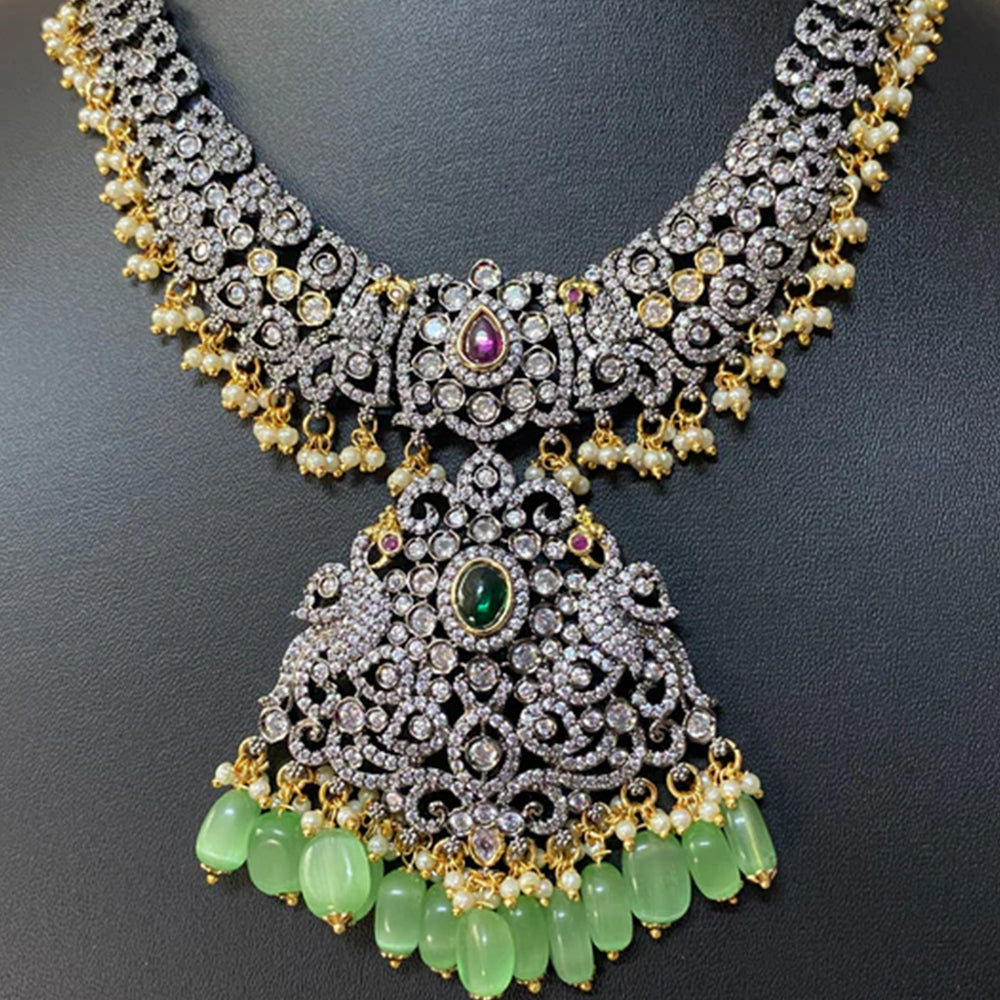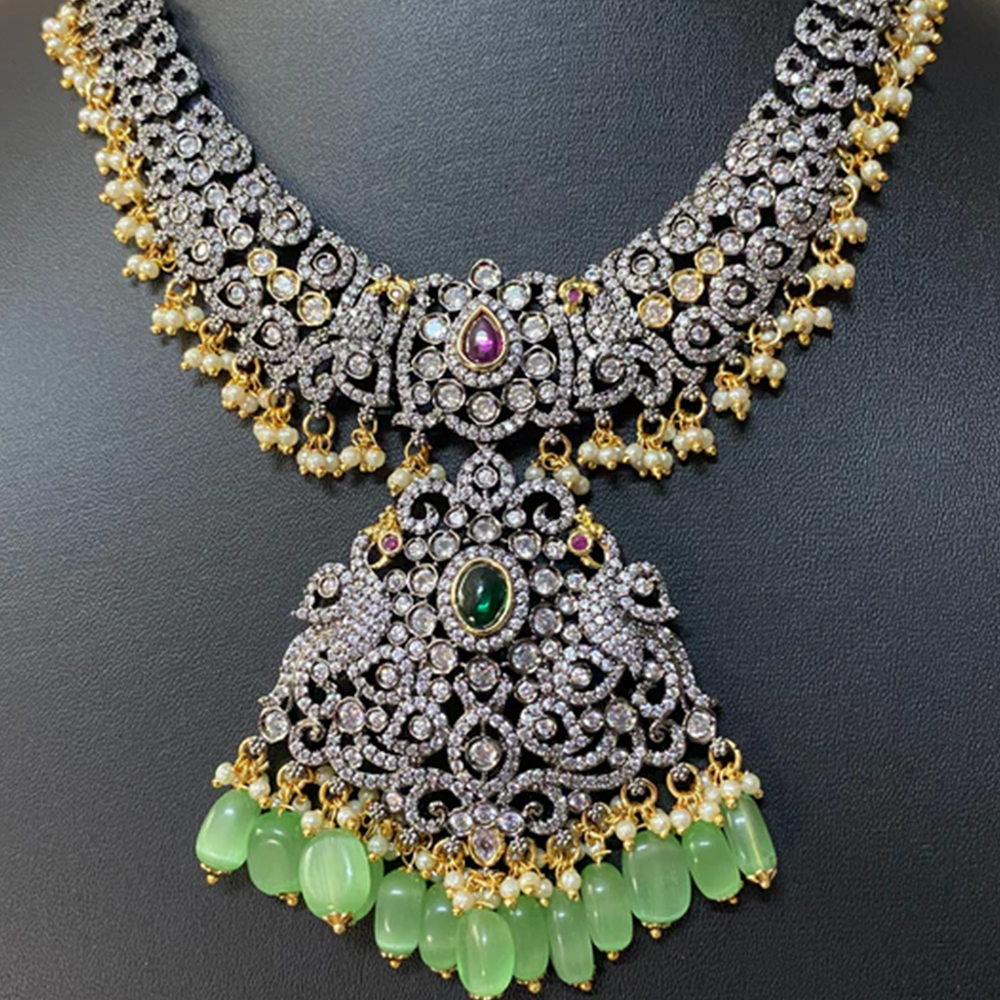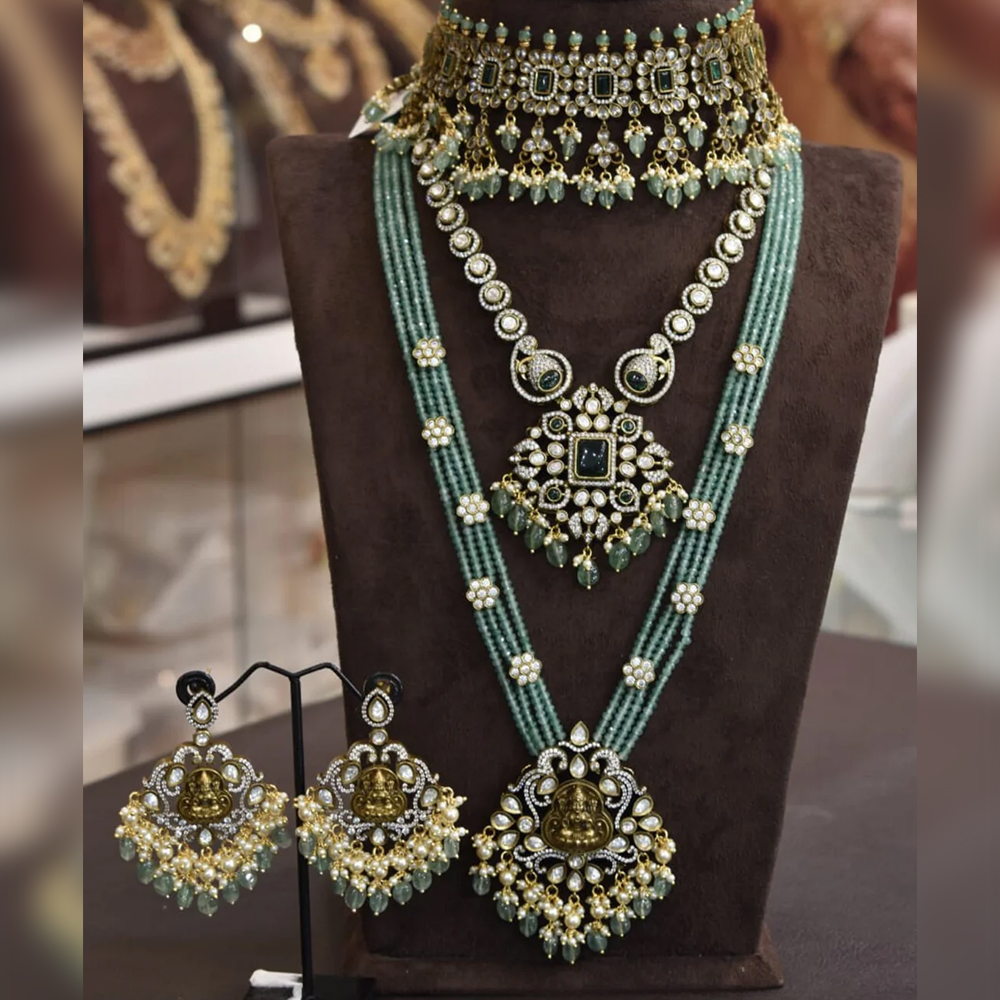
Share
Beyond Queen Victoria: The Diverse Styles of Victorian Necklaces
Victorian jewellery has played a significant role in shaping the trends of the fashion industry ever since its inception. Being a passionate lover of jewellery and gemstones, Queen Victoria was a pioneer of the widespread reach of diverse ornaments across all corners of the world. The variations in jewellery pieces from that era still continue to inspire today’s trends. Several motifs and designs have adapted and evolved from those times. has all the right elements that contribute to its fame and acceptance by designers, women, young girls, fashion icons, royalty, etc. Pearls have the power to transform any outfit into its sophisticated version by adding an element of class and timeless grace. Since pearls are effortlessly glamorous, they are desired by most women to wear for any occasion.
Renowned as the ‘aesthetic period’, the different stages of the era from 1837-1901 led to variations in styles of jewellery design. The diversity of ornaments from that era is visible in every piece and category of jewellery. From a Victorian necklace to crowns to rings, each one had its charm and story to tell. Making good use of different metals, motifs, popular gemstones, and intricate work, among many others, Victorian jewellery developed and has grown into what it is today.
-
Significance of Victorian Necklaces
A Victorian necklace is of great significance and value culturally and historically. The sentiments and symbolism that prevailed in the era were highly valued. Some of the main reasons why our necklaces continue to feature Victorian symbols and motifs is due to their dominance and relevance even in today’s fashion styles:
-
Symbolism: These necklaces often had several intricate designs that were embedded with great symbolic meaning. Hearts, flowers, animals, etc were used to convey love, hope, and spirituality. A Victorian pendant necklace with a locket was also popular as it often had space to store pictures or other memories of loved ones.
-
Status and Wealth: These necklaces were made to make the fashion statement of those days. This led them to be associated with status, prosperity, and wealth. An elaborate necklace with meaningful and exquisite gemstones displayed power.
-
Intricacies: A Victorian gold necklace was often carved with intricate work and showcased the artistry of skilled designers. Filled with enamel work and filigree work and embedded with gemstones, each necklace exhibited tasteful aestheticism.
-


-
Styles of Victorian necklaces
Since the era was filled with inspiration and sentiments all throughout, each piece of jewellery contained its own story. The cultural influences of those times were reflected in the Victorian necklace designs, and here are some of the common themes that were followed:
-
Revivalist Style: Featuring the Renaissance and Gothic revival periods, the necklace pieces often showcased metalwork, serpents and snakes, mythological creatures, etc.
-
Naturalistic Style:A very common pattern found in these necklaces would be floral designs with leaves, botanical designs, or organic motifs. Probably exhibiting enamel work, nature-inspired themes have also evolved into necklaces and pendants today.
-
Sentimental Style: Hair jewellery, pendants, or a Victorian choker necklace that incorporates the use of cherished items, space to keep mementoes, engraved messages, hollow spaces to store, openable lockets to keep photographs, etc were highly popular in those days.
A Victorian necklace is often elaborate and constitutes these style elements. Along with these, other common themes like the mourning style, Egyptian-inspired motifs, etc, were also an occurrence in the era's jewellery. The revolutionary movements of those times resulted in the artistic innovation of these designs that could be incorporated into jewellery pieces. Some styles also captured historical artefacts and magnificent architectural structures to engrave them on necklace designs. Similarly, a Victorian portrait necklace, wherein carvings or works depicting the portrait of a person, was symbolic of remembrance and sentimental style.
-
-
Wearing a Victorian Necklace: Make a Style Statement
The diversity of the designs in a Victorian necklace is now well-known. Utilizing the multiple motifs, different styles, the vastness of the era, and the skills of the artisans helped curate a collection that is inspired but remains relevant even today. These necklaces will never go out of style, and the constant adaptation considering the current fashion trends will ensure the upgrading of the collection as and when needed. Check out the stunning necklace designs as you style them with ease and grace:
-
Layering: Explore and experiment with layers of these necklaces. Create a unique and bold look by pairing a short Victorian pearl necklace with a longer charm necklace to add more depth to the look. Layers can help accentuate both necklace designs equally.
-
Keep them flat: Do not hang your simple pearl necklace. Keep it flat in a box, thus not weakening the string.
-
Do not store in plastic: Pearls are not a fan of plastic bags or boxes. The chemicals in plastic can damage the pearls. Use soft velvet bags or a cloth pouch.
-
Modern elements: Push the boundaries of your fashion styling as you mix and match a Victorian necklace with modern jewellery. Balance the antique style with halo gemstone pieces or a contemporary outfit.
-
-
Conclusion Not only for their precious ornaments but also for their sense of style, the era witnessed a cultural revolution. Victorian necklace designs are a work of art. The sheer brilliance in the craftsmanship that leads to the creation of beautiful pieces is what draws most women towards them. The necklaces are used in many different settings, always keeping them popular and relevant. The reflection of the diverse influences prevalent during those times embodies pure grace and creativity. Choose to purchase a Victorian necklace or other jewellery designs inspired by this era and become an iconic trendsetter.
FAQs
-
01. What did Victorians wear for jewelry?
Popularly using 18k and 22k gold along with other common metals available during those times, Victorian jewellery often used ornaments like – earrings, brooches, necklaces and chokers, pendants, bracelets and other arm jewellery, etc. Hair accessories were also popular during those times.
-
02. How can you tell if a necklace is Victorian?
You can identify if a necklace is Victorian by checking certain features. The motifs and metal used would be the primary indicators. Intricate craftsmanship and the use of gemstones can be assessed. One of the best ways to ensure the authenticity of a Victorian necklace would be to get it assessed by professional jewellers. Documentation and certification can also help.
-
03. What is Victorian jewellery made of?
Victorian jewellery uses precious metals like gold and silver, gemstones like diamonds, pearls, rubies, sapphires, amethysts, etc., have enamel work that is added on to the surface of the metal, and use certain motifs like nature inspired, love themes, mourning jewellery pieces, etc.
-
04. Is Victorian jewelry worth anything?
Yes, jewellery from the Victorian era has great value and significance in terms of not only its aesthetic appeal but also its monetary value. The intricate craftsmanship and authenticity of the metals and gemstones combine to create a truly beautiful ornament that will remain relevant in times to come.
-
04. What is the most expensive jewellery in history?
The most expensive jewellery in history would witness expensive and rare metals and gemstones. Often diamonds, pink star diamonds, Oppenheimer blue diamonds, hope diamonds, etc, contribute to the creation of luxurious and expensive jewellery.

